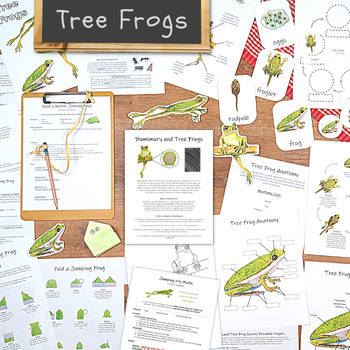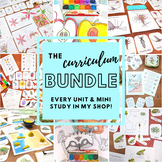Tree Frog STEM activities! With lab activities, origami, biomimicry, & more!
- PDF
What educators are saying
Also included in
- Simply EVERY unit in my shop, in one discounted bundle!→ This collection includes environmental science-inspired complete units and study materials.→ It is perfect for homeschooling, nature camps, STEM camps, and earth/environmental science classrooms.→ All the materials feature my artwork and are bPrice $229.00Original Price $307.00Save $78.00
Description
This is NOT your average frog unit! This unique tree frog STEM unit guides students through activities designed to build Science, Technology, Engineering, and Math skills - all centered around the theme of tree frogs!
Included Materials
- Tree frog classroom decor
- Identifying tree frogs handout
- Fold an origami jumping frog activity
- Build a better jumping frog STEM activity
- Jumping into math activity + worksheets
- All About Tree Frogs handout & brainstorm activity
- Life cycle diagram & blank student sheet
- Egg, tadpole, froglet, and frog three-part cards
- Frog anatomy diagram & blank student sheet
- Local tree frog research project
- Coloring page
- Instructor activity guides and directions
- Worksheet answer key
Please note
→ You are purchasing a PDF download.
→ Printing on 8.5x11" paper is recommended.
→ FOR PERSONAL/CLASSROOM USE ONLY: These materials feature my original artwork and designs. Please do not resell, share, or alter these materials.
→The activities in this pack should be completed with adult supervision. Wild Earth Lab is not responsible for the safety of participants in outdoor and/or lab activities.
Get in Touch
Visit my website, WildEarthLab.com, for free printables and environmental science activity ideas!






